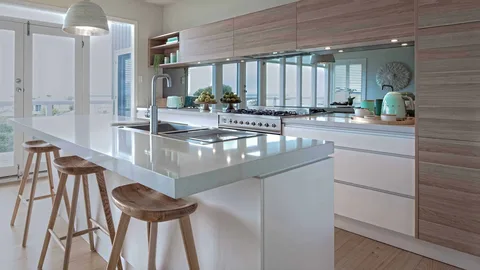In architectural design and construction, conveying a vision is paramount. Architects, designers, and developers must effectively communicate their ideas and concepts to clients, stakeholders, and construction teams. Traditional 2D blueprints and static renderings can only go so far in capturing the essence of a project. This is where 3D animation in architectural visualization comes into play, allowing professionals to bring their designs to life in a dynamic and immersive manner.
Architectural visualization has come a long way from the days of hand-drawn sketches and physical models. Today, it involves many digital tools and techniques that provide a detailed and realistic representation of architectural projects. 3D animation is one of the most influential and engaging tools in this arsenal.
The Power of 3D Animation in Architectural Visualization
The advent of 3D animation has completely changed how we see and create buildings in the ever-changing field of architecture. The tremendous potential of 3D animation, a technology that has established itself as a leader in architectural visualization, is at the core of this development. Employing 3D animation services has become essential for communicating elaborate ideas, deciphering complex spatial configurations, and enabling stakeholders and clients to fully engage with architecture projects before a single brick is placed.
- Enhanced Understanding
3D animation brings depth and perspective to architectural designs that 2D drawings cannot achieve. Clients and stakeholders can explore the space as if inside, gaining a more profound understanding of the project’s layout, aesthetics, and functionality. This immersive experience aids in decision-making and reduces the likelihood of misinterpretation.
- Realistic Simulation
With 3D animation, architects can simulate real-world conditions, such as lighting, weather, and time of day, to display the project’s adaptability and resilience. This capability is invaluable for demonstrating how a building responds to different environmental factors and complements its surroundings.
- Dynamic Storytelling
3D animations allow for the creation of compelling narratives that take viewers on a virtual journey through a building or development. This dynamic storytelling can emphasize critical features, design elements, and the overall concept, helping to create an emotional connection with the audience.
- Iterative Design
Architects and designers can use 3D animations to explore various design options and quickly visualize the impact of changes. This iterative process streamlines the design phase, as alterations can be made and assessed in real time.
- Marketing and Promotion
High-quality 3D animations are invaluable for marketing and promoting architectural projects. They can be used in promotional materials, websites, presentations, and virtual tours to attract potential investors, buyers, or tenants.
- Conflict Resolution
3D animations can help identify potential conflicts or design issues early in the project, allowing for timely adjustments and avoiding costly construction delays or modifications.
The Process of Creating 3D Architectural Animations
Creating 3D architectural animations is a meticulous and creative endeavor that requires a fusion of artistic talent and innovative technology. In the same way, 3D character animation services breathe life into digital characters, crafting 3D architectural animations involves a unique blend of skills and expertise. These animations are not merely static renderings but dynamic, immersive experiences that allow viewers to navigate and explore architectural designs as if they were physically present. Creating 3D architectural animations is a multi-step process that involves:
- 3D Modeling
Building a three-dimensional model of the architectural plan is the first stage. This covers the internal layout, landscape, building construction, and other pertinent components.
- Texturing and Lighting
The 3D model is given realistic-looking textures, materials, and lighting. To get a high degree of visual integrity, this stage is essential.
- Camera Setup
Cameras are placed within the 3D environment to capture the animation from different angles and perspectives. The camera’s movement and field of view are carefully planned to create a dynamic experience.
- Animation and Rendering
The animation is created by moving the camera through the 3D environment and capturing each frame. Powerful rendering software produces high-quality images that will be assembled into the final animation.
- Post-Production
After rendering, post-production techniques, such as adding special effects, music, and narration, are applied to enhance the overall quality and impact of the animation.
The Conclusion
Architectural visualization using 3D animation has changed how designs are communicated and comprehended. Architects, designers, and developers can now communicate their ideas with unmatched clarity and engagement thanks to this invaluable tool. Future architectural visualization is expected to rely more heavily on 3D animation as technology develops, bringing ideas to life in ways that were before simply a pipe dream.





